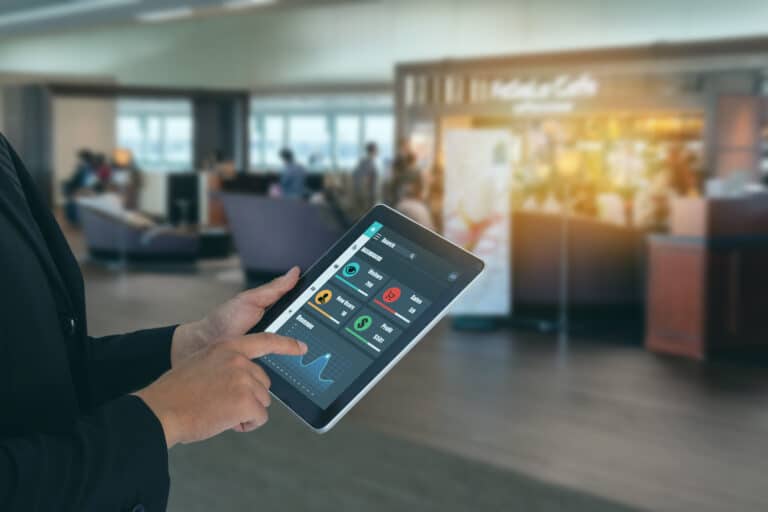Is your utility company using data analytics effectively?
More so than most industries, utility services are uniquely positioned to generate enormous amounts of data that can inform operational improvements. Utility analytics provide actionable insights, enable more effective resource management, and ultimately lead to improved services and reduced costs.
In the sections below, we’ll discuss the importance of data analytics in utility billing and review the key metrics that every utility team should be tracking.
The Importance of Data Analytics in Utility Billing
Data analytics involves transforming raw data into operable insights. Data analytics is a science and a specialized skill. However, modern billing software makes advanced analytics incredibly accessible and customizable.
In the utility billing sector, substantial data volumes are produced on a daily basis. Motivated utility managers can monitor certain metrics on an ongoing basis to improve decision-making in all areas, from customer satisfaction to technical operations.
Metrics that Matter in Utility Billing
Financial Metrics
Along with the standard financial metrics that any company should track, utilities have unique opportunities for financial tracking on a per-customer basis. Customer relationships for utilities are long-term and highly structured, making it possible to monitor metrics such as:
- Revenue per customer: measures the average revenue generated by customers on a monthly, quarterly, or annual basis
- Operating cost per customer: measures how much the utility spends on an average customer in order to provide service
Tracking these metrics reveals performance issues that need improvement and informs decision-making in areas like pricing, staffing, and budgeting.
Operational Metrics
Operational metrics are varied and differ based on utility class. These metrics relate to the efficiency of a utility’s physical systems, digital operations, and personnel. Key operational metrics include service outage frequency, service outage duration, customer service response time, and metrics related to energy use and waste.
Customer-Centric Metrics
A utility’s large customer base and the ongoing nature of utility service make it possible to closely monitor customer service concerns. Customer-centric metrics that utilities track include:
- Customer satisfaction rate: how do customers rate the service you provide?
- Customer engagement level: what percent of customers take desired actions, such as signing up for notifications or participating in energy efficiency programs
- Rate of complaint resolution: when customers register complaints, how do they rate their satisfaction after the issue is resolved?
Tracking these metrics helps utility teams stay tuned in to the prevailing attitudes held by the customer base.
The Role of Utility Billing Software in Tracking Metrics
Utility billing software simplifies the process of tracking financial, operational, and customer-centric metrics. The software automatically tracks and compiles data, saving time and reducing human error.
Here are a few benefits of using billing software for tracking performance metrics.
Maintaining Data Continuity
Utility billing software provides data continuity, i.e. the uninterrupted flow of data that’s up-to-date, accurate, and easily accessed.
In utility analytics, data continuity is crucial. Without it, comparing different data sets (such as one month against another or one region against another) becomes less reliable. Utility billing software ensures consistent, precise data collection that isn’t affected by interruptions such as system updates or service problems.
Integrated Real-Time Data Analysis
Utility billing software gives your team the raw information and tools needed for real-time, integrated data analysis.
Real-time data collection allows utility providers to respond effectively to emergency conditions and to notice trends as soon as they appear. This is essential for preventing small problems from growing and enhancing service delivery during challenging time periods.
Meanwhile, “integrated data analysis” refers to combining multiple tools or data sources to perform better-informed analytics. This might sound overly complicated, but billing software turns many advanced analytics operations into simple tasks. Billing software automates data collection, calculations, and report generation, providing users with valuable insights.
Improved Customer Satisfaction
By helping a utility provider better understand its performance and the needs of its users, billing software helps utilities improve customer satisfaction.
Customer satisfaction improvements may involve improved billing accuracy, better resource allocation, and quicker response times for inquiries and complaints. Some billing software systems even include direct messaging platforms, enabling streamlined communication with customers.
Improve How You Track Your Utility Analytics with silverblaze
The silverblaze platform is designed to improve customer engagement and provide valuable data insights for making informed decisions. With silverblaze, you can optimize customer interactions and harness the power of data analytics to drive organizational success.
To learn more, schedule a product demonstration today.



